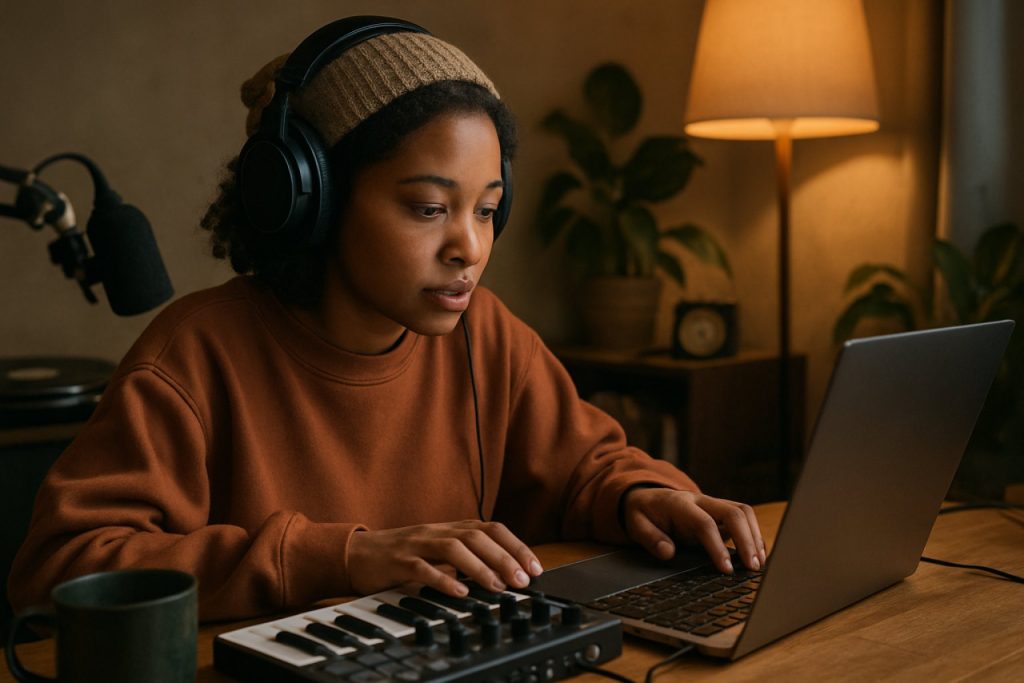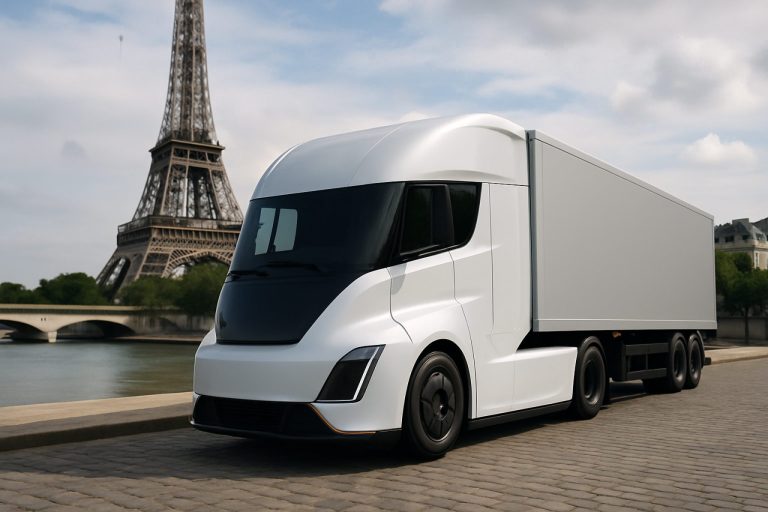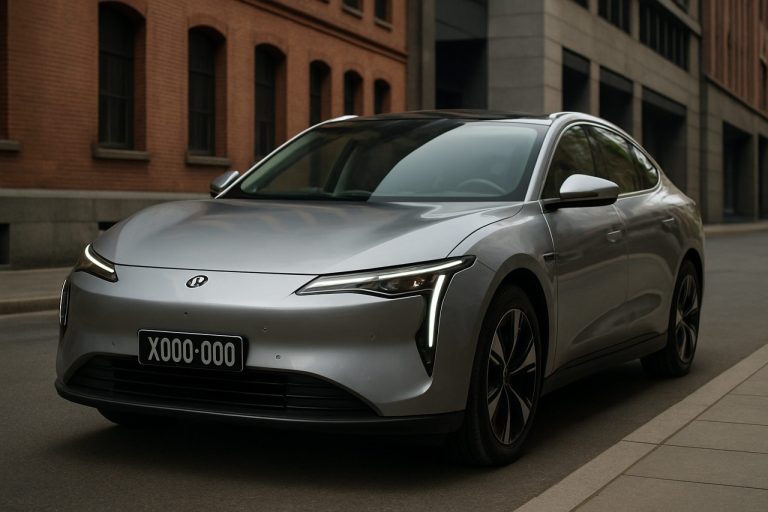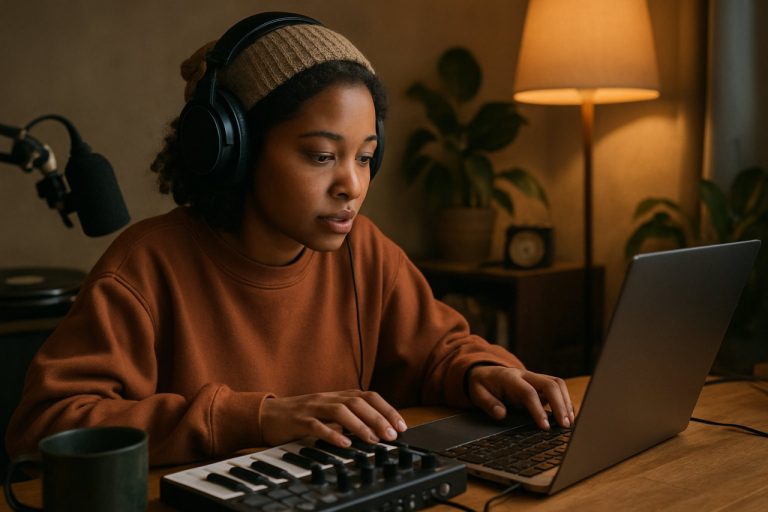
How AI-Generated Music is Transforming Lo-fi Hip Hop Communities: Exploring the Creative Surge, Cultural Shifts, and the Future of Chill Beats (2025)
- Introduction: The Emergence of AI in Lo-fi Hip Hop
- Key Technologies Powering AI-Generated Music
- Major Platforms and Tools: From OpenAI to Google Magenta
- Community Reactions: Embracing and Resisting AI-Created Beats
- Creative Collaboration: Human Producers and AI Algorithms
- Legal and Ethical Considerations in AI Music Production
- Market Growth: AI-Generated Lo-fi Hip Hop’s Rising Popularity (Estimated 30%+ Annual Growth in 2023-2025)
- Impact on Lo-fi Hip Hop Aesthetics and Sound Identity
- Future Outlook: AI’s Role in Shaping Lo-fi Hip Hop Communities
- Conclusion: Navigating the New Era of AI-Driven Lo-fi Music
- Sources & References
Introduction: The Emergence of AI in Lo-fi Hip Hop
The integration of artificial intelligence (AI) into music production has accelerated rapidly in recent years, with lo-fi hip hop communities emerging as a particularly fertile ground for experimentation and adoption. As of 2025, AI-generated music is no longer a novelty but a significant force shaping the soundscape and creative processes within these communities. Lo-fi hip hop, characterized by its mellow beats, nostalgic samples, and relaxed ambiance, has always thrived on accessibility and innovation. The genre’s digital-native audience and creators have embraced AI tools that automate composition, generate unique samples, and even mimic the imperfections that define the lo-fi aesthetic.
Key technological advances have been driven by organizations such as OpenAI, whose generative models like Jukebox and MuseNet have demonstrated the ability to create original music in a variety of styles, including hip hop. Similarly, Google’s Magenta project has released open-source tools that allow musicians to collaborate with machine learning algorithms, further democratizing access to sophisticated music generation capabilities. These platforms have enabled both amateur and professional producers to experiment with AI-generated melodies, drum patterns, and textures, often blending them seamlessly with human creativity.
The impact of AI on lo-fi hip hop is evident in the proliferation of AI-assisted tracks on streaming platforms and social media. According to data from Spotify, playlists featuring AI-generated or AI-assisted lo-fi tracks have seen a marked increase in both volume and listener engagement since 2023. This trend is expected to continue, as more creators leverage AI to meet the growing demand for continuous, mood-based music streams popularized by platforms like YouTube and Twitch.
Looking ahead, the next few years are poised to see even deeper integration of AI in lo-fi hip hop communities. Advances in generative models, real-time collaboration tools, and personalized music experiences are likely to further blur the lines between human and machine creativity. As AI becomes more adept at understanding and replicating the subtle nuances of lo-fi production, the genre may serve as a blueprint for how technology can augment, rather than replace, artistic expression. The rise of AI-generated music in lo-fi hip hop thus represents not just a technological shift, but a cultural evolution within digital music communities.
Key Technologies Powering AI-Generated Music
The rapid ascent of AI-generated music within lo-fi hip hop communities is underpinned by a suite of advanced technologies that have matured significantly by 2025. Central to this evolution are deep learning models, particularly generative adversarial networks (GANs) and transformer-based architectures, which have enabled the creation of highly nuanced and stylistically consistent audio tracks. These models are trained on vast datasets of lo-fi hip hop samples, allowing them to learn the genre’s characteristic textures, rhythms, and melodic patterns.
One of the most influential tools in this space is OpenAI’s Jukebox, a neural network capable of generating music with coherent structure and genre-specific features. Since its public research release, Jukebox has inspired a wave of open-source and commercial projects tailored to lo-fi production, with developers fine-tuning models for the genre’s signature mellow beats and vinyl crackle effects. Similarly, Google’s Magenta project has provided accessible frameworks for both amateur and professional musicians to experiment with AI-driven composition, leveraging recurrent neural networks and transformers to generate melodies, harmonies, and drum patterns that align with lo-fi aesthetics.
Cloud-based platforms have also democratized access to AI music generation. Services powered by Amazon Web Services and Microsoft Azure offer scalable infrastructure for training and deploying custom music models, enabling independent creators and small collectives to produce and distribute AI-generated tracks at scale. These platforms often integrate with digital audio workstations (DAWs), streamlining the workflow from model output to final track mastering.
Another key technology is the use of symbolic music representation, such as MIDI, which allows AI systems to manipulate musical elements at a granular level before rendering them as audio. This approach, championed by projects like Magenta, facilitates the generation of complex arrangements and improvisational elements that are hallmarks of lo-fi hip hop.
Looking ahead, the next few years are expected to bring further integration of AI with real-time music production tools, enabling live generation and remixing of lo-fi tracks during streaming sessions. Advances in unsupervised learning and self-supervised audio modeling are poised to enhance the authenticity and diversity of AI-generated music, while ongoing research by organizations such as Massachusetts Institute of Technology and Stanford University continues to push the boundaries of what is possible in generative audio. As these technologies mature, they are set to redefine creative workflows and expand the sonic palette available to lo-fi hip hop communities worldwide.
Major Platforms and Tools: From OpenAI to Google Magenta
The proliferation of AI-generated music within lo-fi hip hop communities has been significantly shaped by the emergence and evolution of major platforms and tools, most notably those developed by OpenAI and Google Magenta. As of 2025, these organizations have established themselves as central players in the democratization and innovation of AI-driven music creation, directly influencing the soundscape and creative processes of lo-fi hip hop artists and enthusiasts.
OpenAI, renowned for its advancements in generative AI, has continued to refine its music generation models, building on the foundation laid by earlier projects such as Jukebox. By 2025, OpenAI’s tools allow users to generate high-fidelity, genre-specific tracks with customizable parameters, making it possible for lo-fi hip hop producers to experiment with unique textures, chord progressions, and rhythmic patterns. The accessibility of these tools—often available through user-friendly web interfaces or APIs—has lowered the barrier to entry for aspiring musicians, fostering a surge in AI-assisted lo-fi hip hop releases across streaming platforms.
Similarly, Google Magenta, an open-source research project under Google, has played a pivotal role in the integration of machine learning with music and art. Magenta’s suite of tools, such as MusicVAE and DDSP, enables users to generate, manipulate, and remix musical elements with a high degree of control. In 2025, Magenta’s ongoing collaborations with academic institutions and independent artists have resulted in a vibrant ecosystem where lo-fi hip hop creators can leverage pre-trained models or train their own, tailoring AI outputs to the genre’s signature mellow beats and atmospheric samples.
- OpenAI: Continues to expand its music generation capabilities, with a focus on ethical use and artist collaboration. Its models are increasingly integrated into digital audio workstations (DAWs) and online beat-making platforms, streamlining the workflow for lo-fi hip hop producers.
- Google Magenta: Maintains a strong open-source ethos, encouraging community-driven innovation. Its tools are widely adopted in educational settings and by independent musicians, supporting both experimentation and professional production.
Looking ahead, both OpenAI and Google Magenta are expected to further enhance the creative autonomy of lo-fi hip hop communities. With ongoing improvements in model interpretability, real-time collaboration features, and copyright management, these platforms are poised to shape the next wave of AI-generated music, blurring the lines between human artistry and machine intelligence.
Community Reactions: Embracing and Resisting AI-Created Beats
The proliferation of AI-generated music in lo-fi hip hop communities has sparked a spectrum of reactions, ranging from enthusiastic adoption to vocal resistance. As of 2025, the integration of artificial intelligence into music production is no longer a novelty; it is a rapidly maturing practice, with platforms like OpenAI and Google (through its Google Research division) releasing increasingly sophisticated generative models. These tools enable both seasoned producers and newcomers to create lo-fi beats with unprecedented speed and variety, democratizing access to music creation.
Within online communities—particularly on platforms such as YouTube, Discord, and Reddit—AI-generated lo-fi tracks have become a frequent topic of discussion. Many community members embrace these tools for their ability to streamline workflow, inspire creativity, and lower barriers to entry. For example, AI models can generate drum patterns, chord progressions, and even full arrangements, allowing artists to focus on curation and personal expression. This has led to a surge in user-generated content, with some lo-fi channels openly crediting AI as a collaborator or even as the primary composer.
However, resistance is equally pronounced. Purists within the lo-fi hip hop scene often argue that the genre’s appeal lies in its human imperfections—subtle timing shifts, vinyl crackle, and the emotional intent behind each sample. Critics worry that AI-generated beats risk homogenizing the soundscape, eroding the authenticity and intimacy that define the genre. Concerns about originality and copyright have also intensified, especially as AI models are trained on vast datasets that may include copyrighted works. Organizations such as Creative Commons have begun to address these issues, advocating for clearer guidelines on attribution and fair use in AI-generated music.
Looking ahead, the outlook for AI in lo-fi hip hop communities is one of cautious coexistence. While some predict a bifurcation between “human-made” and “AI-assisted” subgenres, others foresee a hybrid future where AI is simply another tool in the artist’s palette. Ongoing dialogue within these communities, as well as evolving policies from music platforms and rights organizations, will shape the trajectory of AI-generated music. As the technology matures, the balance between innovation and tradition will remain a central theme in the lo-fi hip hop landscape.
Creative Collaboration: Human Producers and AI Algorithms
The landscape of lo-fi hip hop music production is undergoing a significant transformation in 2025, as creative collaboration between human producers and AI algorithms becomes increasingly prevalent. This synergy is reshaping both the artistic process and the broader community dynamics within the genre. Lo-fi hip hop, known for its mellow beats and nostalgic textures, has always thrived on experimentation and accessibility. The integration of AI-generated music tools is amplifying these qualities, enabling both seasoned artists and newcomers to push creative boundaries.
Major technology companies and research institutions have accelerated the development of AI music generation platforms. For example, OpenAI has continued to refine its generative models, allowing users to co-create music by providing prompts or samples, which the AI then expands upon. Similarly, Google has advanced its Magenta project, focusing on open-source tools that facilitate human-AI musical collaboration. These platforms are widely adopted in lo-fi hip hop circles, where producers use AI to generate chord progressions, drum patterns, and even entire tracks, which are then customized and refined by human hands.
Recent data from community-driven platforms such as Bandcamp and SoundCloud indicate a marked increase in tracks tagged as “AI-assisted” or “AI-generated” within the lo-fi hip hop genre. This trend is further supported by the proliferation of Discord servers and online forums dedicated to sharing AI-generated samples and discussing best practices for integrating machine learning tools into the creative workflow. The collaborative ethos of these communities is fostering a new wave of hybrid artistry, where the line between human and machine creativity is increasingly blurred.
Looking ahead, the outlook for human-AI collaboration in lo-fi hip hop is robust. As AI models become more sophisticated and accessible, producers are expected to leverage these tools not only for efficiency but also for inspiration and innovation. The democratization of music creation—where anyone with a laptop can access powerful AI composition tools—will likely lead to an even more diverse and globalized lo-fi hip hop scene. Organizations such as OpenAI and Google are poised to play a central role in this evolution, continually releasing updates and resources that empower artists to experiment and collaborate in unprecedented ways.
In summary, 2025 marks a pivotal year for creative collaboration in lo-fi hip hop, as human producers and AI algorithms work side by side to redefine the genre’s sound and culture. This partnership is not only expanding the possibilities of musical expression but also strengthening the sense of community among artists who embrace both tradition and technological innovation.
Legal and Ethical Considerations in AI Music Production
The rapid integration of artificial intelligence into music production, particularly within lo-fi hip hop communities, has brought legal and ethical considerations to the forefront in 2025. As AI-generated tracks proliferate on streaming platforms and social media, questions regarding copyright, authorship, and fair use have become increasingly complex. The use of generative models—such as those developed by OpenAI and Google—enables creators to produce music that closely mimics human composition, blurring the lines between original and derivative works.
One of the primary legal challenges is determining ownership of AI-generated music. In many jurisdictions, copyright law traditionally protects works created by humans, leaving AI-generated content in a gray area. The U.S. Copyright Office reaffirmed in 2023 that works lacking human authorship are not eligible for copyright protection, a stance that continues to influence policy discussions in 2025. This has significant implications for lo-fi hip hop producers who rely on AI tools, as their creations may not be protected under current law, potentially exposing them to unauthorized use or exploitation.
Ethical concerns also arise regarding the use of copyrighted material in training datasets. AI models often learn from vast libraries of existing music, raising questions about whether such use constitutes fair use or infringement. Organizations like Creative Commons advocate for clearer guidelines and licensing frameworks to ensure that original artists are credited and compensated when their work contributes to AI-generated outputs. The lo-fi hip hop community, known for its culture of sampling and remixing, faces heightened scrutiny as AI tools make it easier to replicate distinctive sounds and styles without direct attribution.
In response, some platforms and collectives within the lo-fi scene are adopting transparent labeling practices, indicating when tracks are AI-generated or human-made. This aligns with broader industry efforts, such as those led by The Recording Academy, to establish standards for AI disclosure and ethical use in music production. Additionally, ongoing discussions at the World Intellectual Property Organization are expected to shape international norms around AI authorship and rights management in the coming years.
Looking ahead, the legal and ethical landscape for AI-generated music in lo-fi hip hop is likely to evolve rapidly. As regulatory bodies and industry stakeholders work to address these challenges, the community will need to balance innovation with respect for artistic integrity and intellectual property rights, ensuring a sustainable and fair creative ecosystem.
Market Growth: AI-Generated Lo-fi Hip Hop’s Rising Popularity (Estimated 30%+ Annual Growth in 2023-2025)
The market for AI-generated music, particularly within lo-fi hip hop communities, has experienced remarkable growth in recent years, with 2023–2025 marking a period of accelerated adoption and innovation. Industry estimates and platform data suggest that the annual growth rate for AI-generated lo-fi hip hop content has exceeded 30% during this period, driven by both technological advancements and shifting consumer preferences.
A key driver of this surge is the proliferation of accessible AI music generation tools. Companies such as OpenAI and Google have released advanced generative models—like OpenAI’s Jukebox and Google’s MusicLM—that enable users to create high-quality, genre-specific tracks with minimal technical expertise. These tools have been rapidly adopted by independent producers and content creators, fueling a wave of new lo-fi hip hop releases that blend human creativity with machine-generated elements.
Streaming platforms have played a pivotal role in amplifying the reach of AI-generated lo-fi hip hop. YouTube and Spotify have both reported significant increases in the number of AI-assisted tracks uploaded to their platforms, with lo-fi hip hop channels and playlists among the most popular destinations for listeners seeking ambient, study-friendly music. In 2024, Spotify introduced new metadata tags to help listeners identify AI-generated content, reflecting both the scale and mainstream acceptance of this trend.
Community engagement has also evolved, with online forums and Discord servers dedicated to AI music production seeing exponential growth in membership. These communities facilitate knowledge sharing, collaborative projects, and the rapid dissemination of new techniques, further accelerating the genre’s expansion. The democratization of music creation—where anyone with access to AI tools can participate—has led to a more diverse and globalized lo-fi hip hop scene.
Looking ahead to 2025 and beyond, the outlook for AI-generated lo-fi hip hop remains robust. Ongoing improvements in generative models are expected to yield even more nuanced and customizable outputs, while integration with real-time streaming and interactive platforms could open new avenues for listener engagement. As regulatory frameworks and industry standards continue to evolve, the market is poised for sustained double-digit growth, solidifying AI-generated lo-fi hip hop as a defining force in contemporary music culture.
Impact on Lo-fi Hip Hop Aesthetics and Sound Identity
The integration of AI-generated music into lo-fi hip hop communities is rapidly reshaping the genre’s aesthetics and sound identity as of 2025. Traditionally, lo-fi hip hop has been characterized by its warm, analog textures, subtle imperfections, and nostalgic sampling, often sourced from vinyl records or vintage media. However, the proliferation of advanced generative AI tools—such as those developed by OpenAI and Google—is introducing new sonic possibilities and challenging established norms within the scene.
AI models trained on vast libraries of music can now emulate the signature elements of lo-fi hip hop, including mellow drum patterns, jazzy chord progressions, and tape hiss. These systems are capable of producing endless variations, allowing creators to generate unique tracks at scale. For instance, OpenAI’s music generation research has demonstrated the ability to synthesize convincing lo-fi textures and even replicate the genre’s characteristic imperfections. This technological leap is democratizing music production, enabling both seasoned producers and newcomers to experiment with the lo-fi aesthetic without extensive technical knowledge or access to rare samples.
The impact on sound identity is twofold. On one hand, AI-generated music is expanding the palette of sounds available to artists, fostering innovation and hybridization with other genres. On the other, there is growing debate within the community about authenticity and the preservation of lo-fi’s human touch. Some purists argue that the genre’s charm lies in its manual, hands-on approach and the subtle “errors” that come from human performance and analog equipment. The risk, they contend, is that AI-generated tracks may sound too polished or lack the emotional resonance of human-made music.
Despite these concerns, AI is also being used to intentionally introduce imperfections—such as randomized vinyl crackle or off-grid timing—mimicking the organic feel that defines lo-fi hip hop. As AI tools become more sophisticated, they are increasingly able to capture the nuances that make the genre unique. Major platforms and organizations, including YouTube, have begun to feature AI-generated lo-fi streams, reflecting both the technology’s growing acceptance and its influence on the genre’s evolving identity.
Looking ahead, the next few years are likely to see a continued blending of human and AI creativity in lo-fi hip hop. The genre’s sound identity will evolve as artists leverage AI not just for efficiency, but as a tool for new forms of expression, ensuring that lo-fi hip hop remains both rooted in tradition and open to innovation.
Future Outlook: AI’s Role in Shaping Lo-fi Hip Hop Communities
As 2025 unfolds, the influence of artificial intelligence on lo-fi hip hop communities is poised to deepen, reshaping both creative processes and community dynamics. AI-generated music, once a novel experiment, is now a central force in the genre’s evolution. Platforms such as OpenAI and Google have released advanced generative models—like OpenAI’s Jukebox and Google’s MusicLM—that can autonomously compose, arrange, and even master lo-fi hip hop tracks. These tools are increasingly accessible, allowing both seasoned producers and newcomers to generate high-quality music with minimal technical barriers.
Recent data from 2024 and early 2025 indicate a surge in AI-generated tracks on major streaming platforms. For instance, YouTube and SoundCloud have reported a marked increase in uploads tagged as “AI-generated lo-fi,” reflecting both the growing adoption of AI tools and the genre’s expanding audience. Community-driven channels and livestreams, such as the iconic “lofi hip hop radio – beats to relax/study to,” are experimenting with AI-curated playlists and even real-time AI composition, blurring the line between human and machine creativity.
The democratization of music creation through AI is fostering a more inclusive and diverse lo-fi hip hop scene. Aspiring artists from regions with limited access to traditional music education or equipment can now participate, using AI to bridge skill gaps and experiment with new sounds. This trend is expected to accelerate, as organizations like Magenta (an open-source research project by Google) continue to release free, user-friendly tools for music generation and collaboration.
Looking ahead, the next few years will likely see AI’s role in lo-fi hip hop communities expand beyond music production. AI-driven recommendation systems are set to personalize listener experiences, while generative models may enable interactive, adaptive soundtracks for livestreams and virtual spaces. However, these advances also raise questions about authorship, authenticity, and the preservation of the genre’s human touch. Community forums and collectives are already debating ethical guidelines and best practices for integrating AI, signaling a future where human and machine creativity coexist and coevolve.
In summary, AI-generated music is not only transforming how lo-fi hip hop is made and shared in 2025, but also redefining the very fabric of its communities. As technology continues to advance, the genre stands at the forefront of a broader cultural shift—one where artificial intelligence is both a tool and a collaborator in the creative process.
Conclusion: Navigating the New Era of AI-Driven Lo-fi Music
As 2025 unfolds, the integration of artificial intelligence into lo-fi hip hop communities marks a pivotal transformation in both music creation and consumption. AI-generated music tools, once experimental, are now widely accessible, empowering independent artists and hobbyists to produce high-quality tracks with unprecedented efficiency. Platforms such as OpenAI and Google have released advanced generative models capable of composing, arranging, and even mastering lo-fi hip hop tracks, democratizing the creative process and lowering technical barriers for entry.
This technological shift has led to a surge in AI-generated lo-fi content across streaming services and social platforms. According to recent data from Spotify, playlists featuring AI-assisted or fully AI-generated lo-fi tracks have seen significant growth in both listener numbers and track submissions throughout 2024 and into 2025. The ease of generating endless variations of mellow beats and atmospheric textures has contributed to the genre’s continued popularity as a backdrop for studying, relaxation, and creative work.
However, this new era is not without its challenges. Concerns regarding originality, copyright, and the authenticity of AI-generated music are being actively debated within the community and by organizations such as Creative Commons. As AI models are often trained on vast datasets of existing music, questions about fair use and attribution remain unresolved, prompting calls for clearer guidelines and ethical standards.
Looking ahead, the outlook for AI-driven lo-fi hip hop is both promising and complex. On one hand, AI is expected to further enhance collaboration between human artists and machines, enabling new forms of creative expression and genre hybridization. On the other, the proliferation of algorithmically generated tracks may saturate the market, making it more challenging for individual voices to stand out. Industry leaders and community moderators are increasingly focused on fostering transparency, encouraging responsible AI use, and supporting emerging talent.
Ultimately, the rise of AI-generated music in lo-fi hip hop communities signals a broader shift in the music industry’s landscape. As technology continues to evolve, artists, listeners, and organizations must navigate this new era thoughtfully—balancing innovation with integrity to ensure that the genre’s unique spirit endures.
Sources & References
- Spotify
- Amazon Web Services
- Magenta
- Massachusetts Institute of Technology
- Stanford University
- Creative Commons
- U.S. Copyright Office
- The Recording Academy
- World Intellectual Property Organization
- YouTube
- SoundCloud



